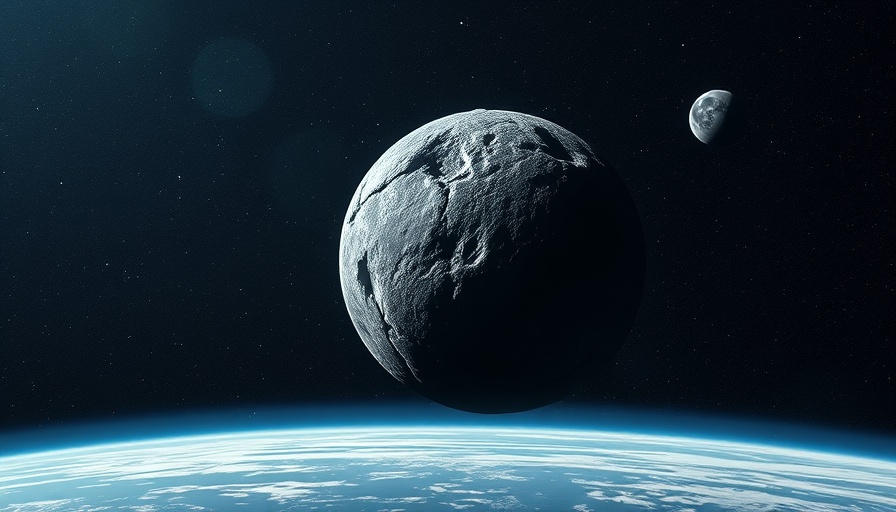
Understanding the Surprising Nature of Asteroid 2024 YR4
The notorious asteroid 2024 YR4 has made headlines in the scientific community following its detection last year, showcasing a fascinating aspect of our solar system. Initial fear of a potential collision with Earth raised eyebrows, as this celestial body was deemed a significant threat due to its calculated 1.3% chance of impact in December 2032. However, as astronomers conducted more observations, this risk diminished significantly, illustrating the importance of ongoing astrophysical research.
Unconventional Origins: Beyond the Common Assumptions
Recent studies reveal that 2024 YR4 likely stems from the central region of the main asteroid belt, between Mars and Jupiter—a region rarely associated with Earth-crossing asteroids. This surprising discovery suggests that asteroids may originate from varied locations than previously thought. This finding challenges traditional notions of where such space rocks are formed and navigated throughout our solar system.
The Mechanics of Space: Retrograde Spin and the Yarkovsky Effect
The asteroid's retrograde spin, rotating opposite its orbit, and its interaction with sunlight through the Yarkovsky effect sheds light on its unique characteristics. This subtle force, driven by uneven sunlight absorption, nudges asteroids inward over time, illustrating how celestial mechanics deeply influence the behavior of space bodies. According to researcher Bolin, gravitational interactions with Jupiter potentially assisted in shaping 2024 YR4's current trajectory, creating a captivating narrative of movement through the cosmos.
An Unexpected Shape: Asteroid or Hockey Puck?
Adding to the intrigue is the asteroid's remarkable shape—flat and rounded, reminiscent of a hockey puck, contrasting sharply with the potato-like forms many asteroids typically take. This distinct morphology not only offers insights into its past but also into why certain asteroids embark on paths toward Earth. The rapid rotation period of just 20 minutes plays into this narrative, providing clues about its composition and various physical attributes.
As technology advances, so too does our understanding of cosmic phenomena. The usage of facilities such as the James Webb Space Telescope dramatically enhances our ability to monitor and comprehend objects like 2024 YR4, highlighting the harmonic relationship between innovation and space exploration.
Moving Forward: Implications for Planetary Defense
With the risk potential of asteroids like 2024 YR4 ever-present, the continuous study of their trajectories is essential in planetary defense discussions. As scientists refine their observations and improve predictive models, the significance of this journey only deepens. Not only must we maintain vigilance against such potential threats, but we also stand to gain invaluable insights from observing them.
In a world ever-evolving with technology and innovation, the importance of asteroids in our understanding of celestial bodies cannot be overstated. They serve as crucial reminders of our place in the universe and stimulate curiosity about the cosmos—a theme that resonates with anyone interested in the intersection of space and technology.
 Add Row
Add Row  Add
Add 




Write A Comment